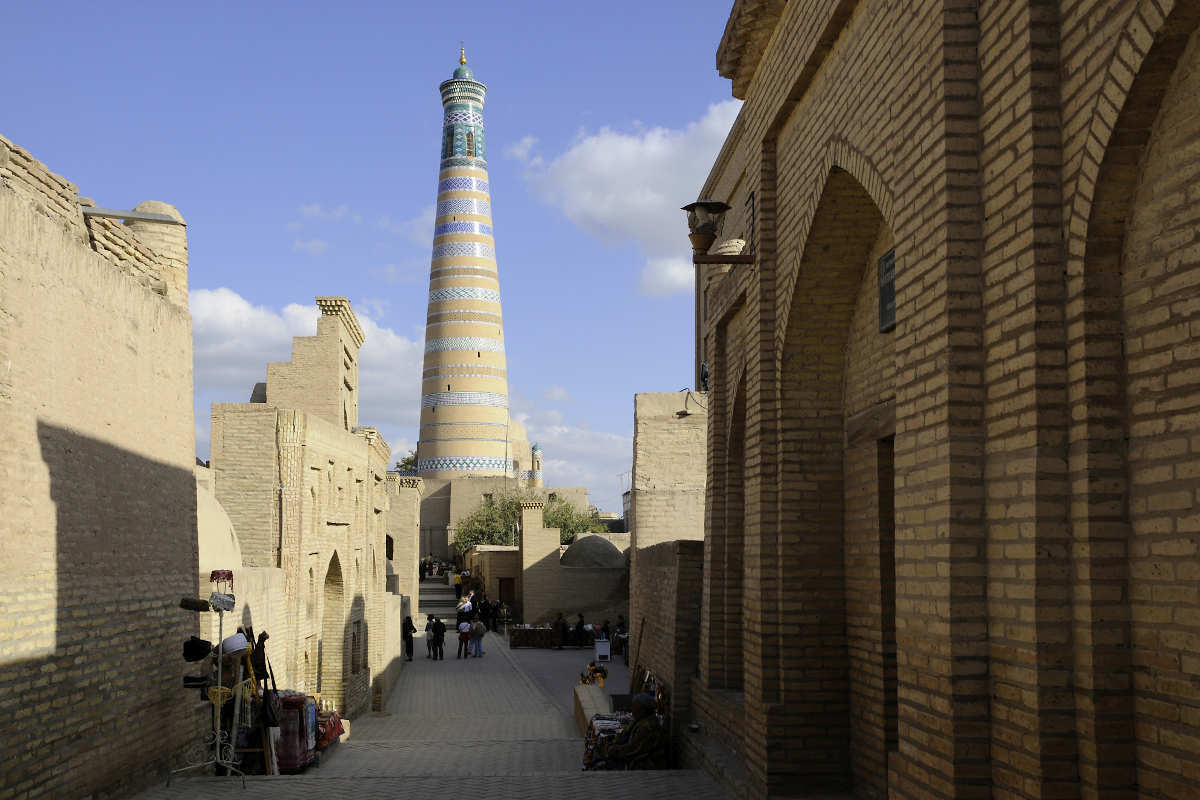Khiva - Residence of Islam Khodja
The residence of Islam Khodja, the spiritual advisor of Isfandiyar Khan, consists of the smallest madrasa in Khiva (42 hujjras – rooms for students) and the highest minaret (57 metres).
Together, the structures form an unusual but harmonious architectural ensemble. The most famous masters of the era participated in its construction. The minaret of Islam Khodja* is called the symbol of Ichan-Qala.

At a height of 45 metres, there is a viewing terrace from which the whole city can be seen. The finishing of the minaret with the glazed tiles lends a certain lightness and elegance to the imposing structure.
For architecture lovers, the domed hall and the majolica workmanship of the entrance and walls of the madrasa are of interest. Those who are not indifferent to history will be interested in the tragic fate of Islam Khodja*, whose progressive ideas did not find favour with his contemporaries, leading to his death.
*Said Islam Khodja distinguished himself as a dignitary during the reign of Khan Said Muhammad Rahim II, who ruled from 1863 to 1910. Under his successor Khan Isfandiyar (reigned 1910 to 1920), he rose to the position of vizier or first minister. He received a mandate from the ruler to implement far-reaching reforms in the khanate. For example, he sought to reform the school system. Other measures included the construction of a post and telegraph station and a cotton factory.
Due to concerns about the progressive action, other dignitaries of the khanate submitted a written protest against the innovations in 1911. In response to this, the vizier accused his opponents of conspiracy and obtained their arrest. In the summer of 1913, he was killed by a contract killer.
Between 1908 and 1910, Said Islam Khodja had his residence – the Islam Khodja Madrasa – built in the east of the old city of Khiva. He also had the Islam Khodja minaret, the tallest in the city, built.
One of Said Islam Khodja’s daughters was the wife of Khan Isfandiyar (source: Wikipedia).
